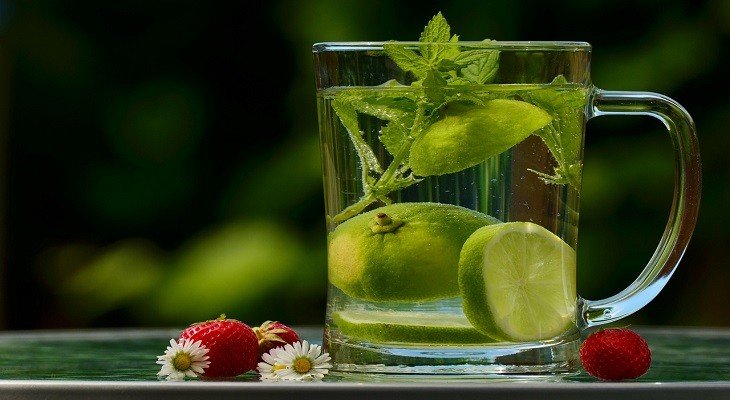Yoga Therapy For Asthma
2 years ago 510What is Asthama
Asthma is a long-term (chronic) illness that affects the airways in the lungs. The airways are the tubes that allow air to enter and exit your lungs. When you have asthma, your airways might become irritated and constricted. Asthma affects people of all ages and frequently begins in childhood. You may have wheezing, coughing, or chest discomfort. These symptoms can range from moderate to severe, and they might occur on a daily or irregular basis. Certain things can set off or worsen asthma symptoms, such as cold air. These are referred to as asthma triggers. An asthma attack occurs when symptoms worsen. An asthma action plan might assist you in controlling your asthma. Monitoring, avoiding triggers, and utilising medications may all be part of the approach.
Causes: -
Asthma's specific aetiology is unclear, and the causes may differ from person to person. Asthma, on the other hand, is frequently the outcome of a severe immune system reaction to a chemical in the lungs. Understanding asthma requires an understanding of how the lungs work.
Normally, the immune system of the body aids in the battle against illnesses. An allergen is a chemical in the environment that causes a person's immune system to react. When a person inhales an allergen, such as ragweed, the immune system in the airways may overreact. Other persons who have been exposed to the same drug may not have any reaction at all.
When exposed to an allergen, the immune system responds by inducing inflammation. Inflammation causes your airways to enlarge and constrict, as well as create more mucus. This can make it difficult to breathe. Bronchospasm occurs when the muscles around the airways constrict. This can make breathing even more difficult.
Your surroundings or work, family history or genes, other medical issues, race or ethnicity, or gender may all increase your chances of acquiring asthma.
Asthma affects people of all ages, although it most commonly begins in childhood. Adults, particularly women, can acquire asthma. Adult-onset asthma, also known as late-onset asthma, is a kind of asthma that develops later in life.
Risk factor:
Your surroundings or work, family history or genes, other medical issues, race or ethnicity, or gender may all increase your chances of acquiring asthma.
Asthma affects people of all ages, although it most commonly begins in childhood. Adults, particularly women, can acquire asthma. Adult-onset asthma, also known as late-onset asthma, is a kind of asthma that develops later in life.
Workplace or environment
Things in your surroundings, such as at work or at home, may increase your chance of getting asthma or exacerbate asthma symptoms.
•Being exposed to cigarette smoke when pregnant or throughout a child's first few years increases the likelihood of having asthma symptoms later in life. This exposure may potentially have an impact on lung growth and development.
•Early in childhood, exposure to diverse bacteria in the environment might impact how the immune system develops. These immune-system actions may either exacerbate or protect against the development of asthma.
• Workplace exposures, such as chemical irritants or industrial dusts, may further increase the chance of getting asthma in vulnerable individuals. This is referred to as occupational asthma. It can grow over time and typically persists even after you are no longer exposed to it.
• Pollution or allergens in the air may aggravate asthma. Pollutants may include air pollution caused by transportation. Pollen, dust, and other particles in the air can all be allergens.
Family history and genes
Because genes influence how the immune system develops, they may have a role in the development of asthma. It is quite likely that more than one gene is implicated. Your parents' genes are passed down to you. Having an asthmatic parent, especially if the mother has asthma, increases the likelihood that a kid may get asthma. Because genes influence how the immune system develops, they may have a role in the development of asthma. It is quite likely that more than one gene is implicated. Your parents' genes are passed down to you. Having an asthmatic parent, especially if the mother has asthma, increases the likelihood that a kid may get asthma.
Signs and symptoms : Asthma symptoms and signs may include -
• Tightness in the chest
• Coughing, especially at night or early in the morning
• Breathing difficulties
• Wheezing, which results in a whistling sound when you exhale.
Yoga Therapy for Asthma
The monsoon season brings a slew of air and waterborne infections. Asthma attacks are also becoming more common. The monsoon or rainy season increases the concentration of mould and spores, and environmental contaminants likely to provoke an asthma attack and symptoms.
"Prevention is better than cure," say yoga practitioners. All yoga methods aid in disease prevention and are beneficial in the treatment of any problem or sickness.
Handy Tips-
• Asthmatics should cover their heads and avoid direct breeze on their head area.
• Dietary Discipline is essential. Make a point of drinking a glass of warm water after each meal. This aids in the removal of mucus from the channel.
SHAT KARMAS
Jal Neti – It is non-harmful, non-irritating, and extremely easy. Beginners in yoga may use this yoga nasal douche with confidence and reap the advantages. A beneficial yogic method for cleaning the nasal passages and sinusoidal cavities of dirt, debris, possible illness agents (bacteria and viruses), and excess mucus.
Karna Randhra Dhouti and Kapal Randhra Dhouti – These are beneficial yogic practises for irrigation of all the cavities of the skull and cleaning them of pollutants, possible illness agents (bacteria and viruses), and excess mucus. The quantity of dust we breath, as well as the contaminated food and hazardous drinks we consume on a regular basis, is inescapable in blocking the biophysical mechanisms. As a result, the cavities of the skull suffer from dust collection, pollutants, and the accumulation of excess phlegm.
SUGGESTED PRANAYAMAS
Anulom Vilom – This pranayama (breathing method) helps to relax the mind and ease stress in the body. Many respiratory and circulatory diseases can be helped by using this breathing method.
Kapalbhati – The term "Kapalbhati" is made up of two words: "Kapal" means "skull" (in this approach, the skull comprises all the organs in and around the head) and "Bhati" means "shining or illuminating." This breathing technique is mostly used to clear the sinuses in the face. The entire face's blood circulation and oxygenation are boosted.
SUGGESTED YOGA ASANA
1. Ardha Matsyendrasana (Sitting Half Spinal Twist)
2. Pavanamuktasana (Wind Relieving Pose)
3. Setu Bandhasana (Bridge Pose)
4. Bhujangasana (Cobra Pose)
5. Adho Mukha Svanasana (Downward-Facing Dog Pose)
6. Badhakonasana (Butterfly Pose)
7. Poorvottanasana (Upward Plank Pose)
8. Shavasana (Corpse Pose)













